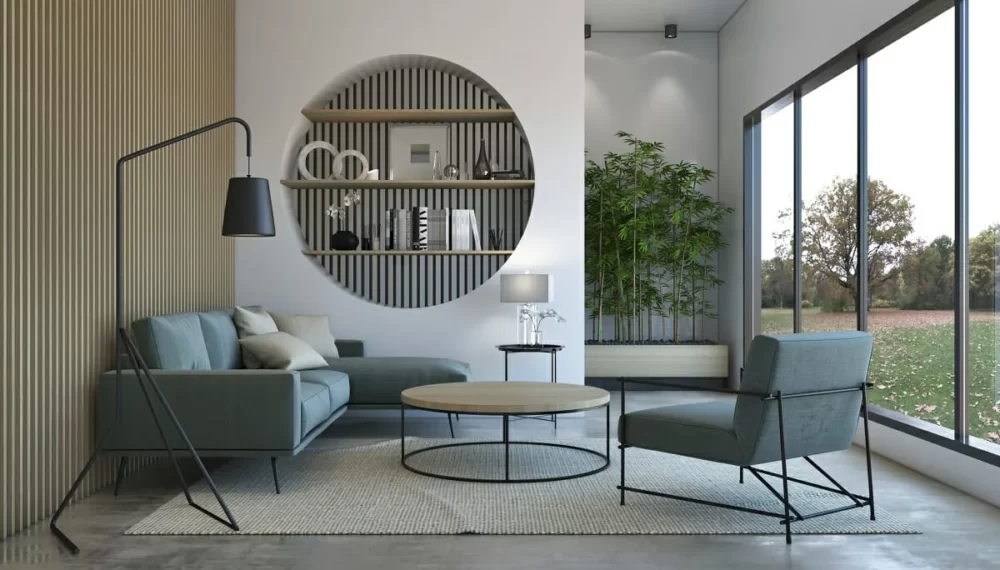Home Improvement
Sustainability In Interior Design: Eco-friendly Practices

Sustainability has become a paramount consideration in various industries, including interior design. As the world recognizes the importance of preserving our environment, interior designers are embracing eco-friendly practices to create sustainable and environmentally conscious spaces. In this article, we will explore the concept of sustainability in interior design and discuss the significance of pursuing a diploma in interior design to develop expertise in this field.
We will also delve into the specific application of sustainable practices in commercial space interior design, highlighting the benefits and challenges associated with incorporating sustainability into these projects.
Table of Contents
Understanding Sustainability in Interior Design
Defining Sustainability: Sustainability in interior design refers to the use of practices and materials that minimize environmental impact, conserve resources, and promote the well-being of occupants. It involves considering the entire lifecycle of a project, from design and material selection to construction, operation, and eventual deconstruction. Sustainable interior design aims to create spaces that are energy-efficient, environmentally responsible, and socially conscious.
Benefits of Sustainable Interior Design: Embracing sustainability in interior design offers numerous benefits. First and foremost, it helps reduce the carbon footprint of space by minimizing energy consumption, utilizing renewable resources, and incorporating efficient systems. Sustainable design also improves indoor air quality by selecting low-emission materials and promoting proper ventilation. Additionally, it enhances the well-being and productivity of occupants by creating healthy and comfortable environments. Moreover, sustainable interior design can contribute to cost savings in the long run, as energy-efficient systems and sustainable practices often result in reduced operational expenses.
Pursuing a Diploma in Interior Design
Gaining Knowledge and Skills: A diploma in interior design provides aspiring designers with comprehensive knowledge and practical skills necessary to excel in the field. Students learn about various aspects of interior design, including design principles, space planning, material selection, and construction techniques. Pursuing a diploma in interior design equips individuals with a solid foundation in design aesthetics and technical expertise, enabling them to incorporate sustainability principles into their work.
Understanding Sustainable Design Strategies: A diploma program in interior design also focuses on sustainability and eco-friendly design strategies. Students learn about sustainable materials, energy-efficient systems, waste reduction, and other sustainable practices. They gain an understanding of green building certifications, such as Leadership in Energy and Environmental Design (LEED), and learn how to incorporate these principles into their design projects. A diploma program provides a platform for aspiring designers to explore innovative solutions and stay updated with the latest trends and advancements in sustainable interior design.
Applying Sustainability in Commercial Space Interior Design
Challenges in Commercial Space Design: Commercial spaces pose unique challenges when it comes to incorporating sustainable design practices. These spaces often have specific requirements and regulations that need to be considered. Additionally, commercial spaces typically accommodate larger numbers of people, requiring careful attention to issues such as lighting, ventilation, and acoustic comfort. Balancing sustainability with the functional and aesthetic requirements of commercial spaces requires careful planning, collaboration with stakeholders, and an understanding of the specific needs of the business or organization.
Energy Efficiency and Lighting: One of the key aspects of sustainable interior design in commercial spaces is energy efficiency. Designers can incorporate energy-efficient lighting systems, such as LED lights, daylighting strategies, and motion sensors, to minimize energy consumption. Maximizing natural light not only reduces the need for artificial lighting but also creates a visually appealing and comfortable environment for occupants.
Material Selection and Waste Reduction: Sustainable material selection is crucial in commercial space interior design. Designers can choose eco-friendly materials with low VOC (volatile organic compound) emissions, recycled content, and high durability. They can also incorporate materials with sustainable certifications, such as Forest Stewardship Council (FSC) certified wood. Additionally, waste reduction strategies, such as recycling and proper disposal of construction waste, should be implemented throughout the project to minimize environmental impact.
Monitoring and Evaluation: To ensure the effectiveness of sustainable interior design strategies in commercial spaces, it is crucial to implement monitoring and evaluation systems. Designers can establish performance benchmarks, track energy, and water consumption, and analyze the environmental impact of the space over time. This data-driven approach allows for continuous improvement and enables designers to identify areas for further optimization. Regular monitoring and evaluation ensure that sustainable practices are maintained and provide opportunities for ongoing innovation and refinement.
Conclusion
Sustainability in interior design is a growing trend that emphasizes the importance of creating environmentally conscious and socially responsible spaces. By pursuing a diploma in interior design, aspiring designers can acquire the necessary knowledge and skills to incorporate sustainable practices into their work. In commercial space interior design, sustainability becomes even more critical, considering the scale and impact of these projects. By focusing on energy efficiency, material selection, waste reduction, and other sustainable strategies, designers can create commercial spaces that are not only visually appealing but also environmentally friendly. As the demand for sustainable design continues to rise, interior designers play a crucial role in shaping the future of interior spaces, contributing to a more sustainable and resilient built environment.
Also, Read – Eco-Friendly Plumbing: How To Save Water And Energy At Home

-

 Business3 years ago
Business3 years agoHow to Do Long-Distance Moves with Children
-

 Travel2 years ago
Travel2 years agoQuick Guide: Moving To Santa Rosa?
-

 Real Estate3 years ago
Real Estate3 years agoWhy Dubai Festival City is a Great Neighbourhood for Young Learners
-

 Business3 years ago
Business3 years agoIs Guest Posting a Good Inbound Marketing Strategy?
-

 Business1 year ago
Business1 year agoThe Ultimate Guide To Thriving In Your Printing Franchise
-

 Business1 year ago
Business1 year agoExploring The Benefits And Challenges Of Restaurant Franchising
-

 Tech3 years ago
Tech3 years agoCyber Table That Will Change Your Life
-

 Lifestyle1 year ago
Lifestyle1 year agoDallas’ Hidden Gems: 6 Must-Try Restaurants Off The Beaten Path!









Recent Comments